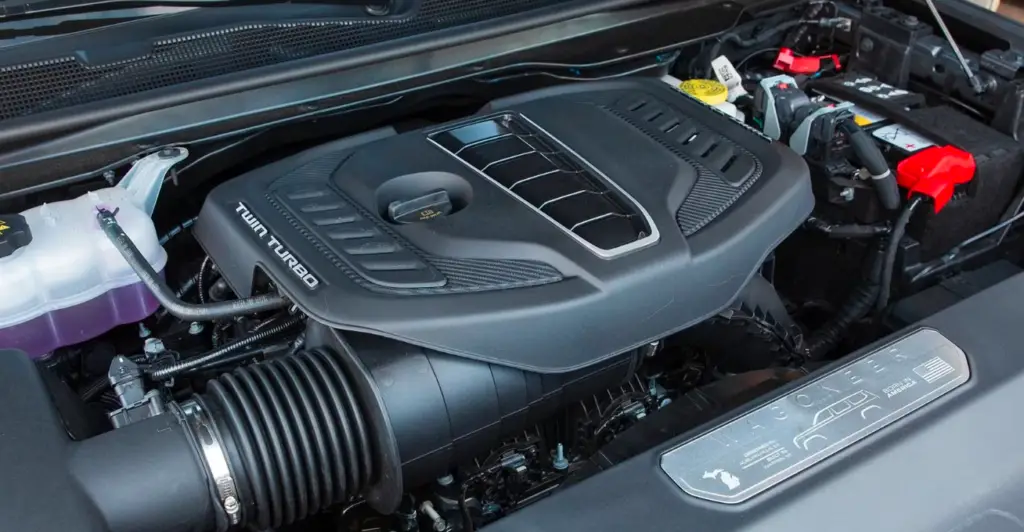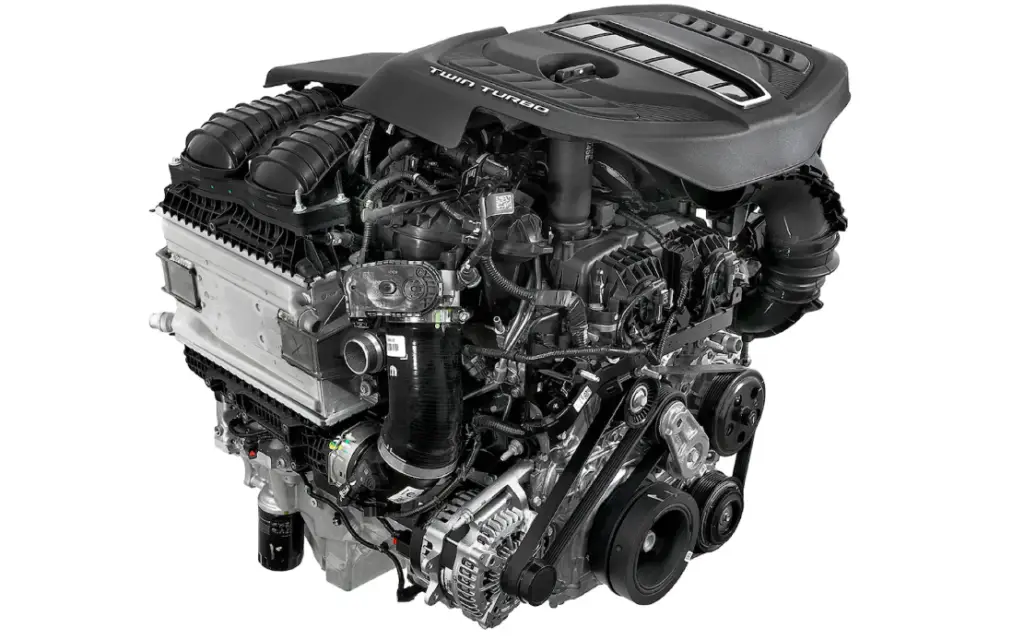The Hurricane engine is a 3.0-liter twin-turbo inline-six by Stellantis, offering up to 510 hp and improved fuel efficiency over V8s. It powers models like the Jeep Grand Wagoneer and is designed for high performance with lower emissions.
The automotive industry has always been a battleground for innovation, where engineering prowess meets consumer demand. One of the latest advancements in engine technology is the Hurricane engine, a high-performance powertrain designed to deliver both exceptional power and impressive fuel efficiency.
In this blog post we will discuss the specifications, design philosophy, and technological innovations of the Hurricane engine.

Contents
Introduction to the Hurricane Engine
The Hurricane engine is a turbocharged inline-six (I6) engine developed by Stellantis, primarily designed for Jeep and other Stellantis brands. It comes in two configurations: the Standard Output (SO) and the High Output (HO) versions. This engine represents Stellantis’s commitment to providing robust performance while adhering to stricter emissions regulations and improving fuel economy.
Technical Specifications
An in-depth look at the Hurricane engine’s cutting-edge design and performance metrics.
Standard Output (SO) Hurricane Engine
Designed for a balance of power and efficiency, the SO version offers impressive performance for everyday driving and off-road capability.
- Engine Type: 3.0-liter twin-turbocharged inline-six (I6)
- Horsepower: Approximately 420 hp
- Torque: Around 468 lb-ft
- Fuel Type: Premium gasoline
- Turbochargers: Dual turbochargers for reduced turbo lag
- Fuel Injection: Direct injection for improved fuel delivery
- Cooling: Water-to-air intercooler
- Compression Ratio: 10.4:1
High Output (HO) Hurricane Engine
Engineered for maximum performance, the HO version delivers thrilling power and torque for high-performance driving enthusiasts.
- Engine Type: 3.0-liter twin-turbocharged inline-six (I6)
- Horsepower: Approximately 500 hp
- Torque: About 475 lb-ft
- Fuel Type: Premium gasoline
- Turbochargers: Upgraded dual turbochargers for increased boost pressure
- Fuel Injection: Advanced direct injection system
- Cooling: Enhanced intercooler system
- Compression Ratio: 9.5:1
Design and Engineering Innovations
Blending cutting-edge technology with smart engineering, the Hurricane engine is designed to maximize performance, efficiency, and durability.
- Turbocharging Efficiency: The Hurricane engine utilizes twin turbochargers that work in tandem to minimize turbo lag, providing smoother power delivery across the rev range. This setup enhances performance without compromising fuel efficiency.
- Lightweight Materials: Constructed with an aluminum block and cylinder head, the engine benefits from reduced weight, contributing to better handling and fuel economy.
- Advanced Cooling Systems: A sophisticated water-to-air intercooler ensures optimal engine temperatures, improving reliability and sustained performance under demanding conditions.
- Direct Fuel Injection: This technology enables precise fuel delivery, improving combustion efficiency and reducing emissions.
- Variable Valve Timing (VVT): VVT allows for optimized valve operation, enhancing both performance and fuel economy by adjusting valve timing according to driving conditions.
Performance and Efficiency
The Hurricane engine offers an excellent balance between raw power and fuel efficiency. The SO version delivers a smooth and responsive driving experience ideal for daily driving and off-road adventures. The HO version, with its elevated power output, caters to enthusiasts seeking high-performance capabilities.
Fuel efficiency is a key advantage, with the Hurricane engine outperforming larger V8 engines in terms of miles per gallon (MPG), thanks to its smaller displacement and turbocharging technology. Additionally, the engine complies with stringent emissions standards, making it a future-proof choice for performance vehicles.
Applications of the Hurricane Engine
The Hurricane engine powers several high-performance vehicles under Stellantis brands, particularly Jeep and RAM models. Notable applications include:
Ram 1500 (Future Models): Expected integration for improved towing and fuel efficiency.
Jeep Grand Wagoneer: Enhanced off-road and towing capabilities with the HO variant.
Jeep Wagoneer: Balanced performance and luxury with the SO variant.

Advantages Over Traditional V8 Engines
- Fuel Efficiency: Offers better mileage compared to naturally aspirated V8 engines.
- Lower Emissions: Complies with stricter emissions standards.
- Compact Design: Allows for better weight distribution and more cabin space.
- Enhanced Performance: Higher torque and horsepower for superior driving dynamics.
Future Developments
Looking ahead, Stellantis may expand the Hurricane engine lineup with hybrid or plug-in hybrid variants. This evolution would further improve fuel efficiency and performance while meeting evolving environmental regulations.
Frequently Asked Questions
Here are some FAQs about hurricane engine specs –
1. What vehicles use the Hurricane engine?
The Hurricane engine is currently available in select Jeep models like the Grand Wagoneer and is expected to be introduced in other Stellantis vehicles.
2. How does the Hurricane engine compare to a V8?
The Hurricane engine offers similar or better performance than traditional V8 engines, with better fuel efficiency and lower emissions.
3. Does the Hurricane engine require premium fuel?
Yes, the Hurricane engine is designed to run on premium gasoline to maximize performance and efficiency.
4. What is the difference between the SO and HO versions of the Hurricane engine?
The SO (Standard Output) version focuses on balanced performance and efficiency, while the HO (High Output) version delivers higher horsepower and torque for enhanced performance.
5. Is the Hurricane engine reliable for off-road use?
Yes, the Hurricane engine is engineered for durability and performance, making it suitable for off-road and rugged terrain applications.
Conclusion
The Hurricane engine stands as a testament to modern automotive engineering, blending power, efficiency, and environmental responsibility. With its advanced technologies and thoughtful design, it represents a significant step forward in internal combustion engine innovation. As Stellantis continues to refine this engine, it will likely remain a cornerstone in their performance and efficiency strategy for years to come.